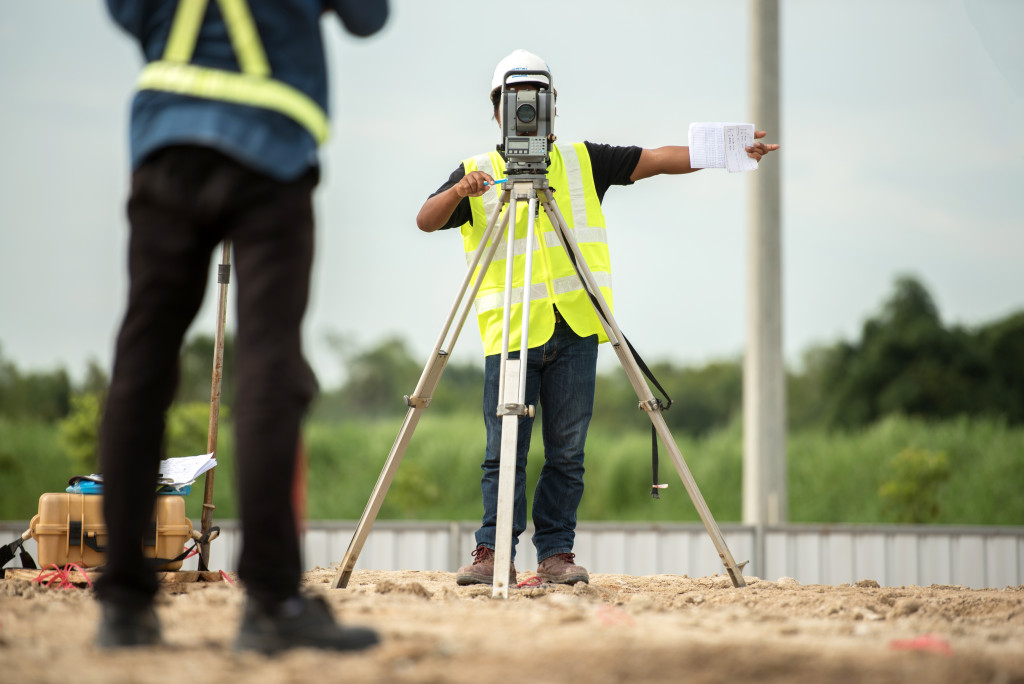- By outsourcing services, construction companies can optimize their bottom line and improve product quality while gaining access to specialized skill sets.
- 3D printing promises faster and more cost-effective building and improved quality of work due to precision and customized designs.
- Augmented reality enables interactive safety training and orientation, improved design quality, and remote project management.
- Revolutionary technology is driving the construction industry forward, allowing for cost reductions, efficiency gains and safer job sites.
As the world continues to advance, the construction industry is not left behind. New technologies are being developed and implemented to improve the efficiency, safety, and productivity of the construction process. This results in cost savings, improved quality of work, and safer worksites. Here are some of the latest tech trends to look out for in the construction industry.
Service Outsourcing: A Game-Changer for Construction Companies
Outsourcing has been a popular business strategy for decades, and the construction industry is no exception. With the rise of the gig economy, companies can now outsource services more easily than ever. Service outsourcing allows construction companies to reduce costs, improve efficiency, and access specialized expertise. Below are some of the most popular services being outsourced in the construction industry:
Industrial Electrical Services
Industrial electrical services are an essential part of the construction process. From wiring to lighting to power distribution, trusted industrial electrical services are required at every stage of construction. By outsourcing these services, construction companies can benefit in many ways, including better output and safety, less downtime, and improved quality of work.
Commercial Plumbing Solutions
Commercial plumbing solutions are also a key part of the construction process. From new installations to repairs and maintenance, experienced commercial plumbers can help ensure that all plumbing requirements are met safely and efficiently. Outsourcing these services can save time, money, and hassle for construction companies.

3D Printing: Building the Future, One Layer at a Time
3D printing is a technology that has been around for several years, but it has only recently been implemented in the construction industry. It involves building structures layer by layer using a 3D printer. This technology promises to revolutionize the construction industry in the following ways:
Faster Construction Times
3D printing allows for the rapid construction of complex structures. It can significantly reduce construction times, allowing projects to be completed faster and more efficiently. More so, 3D printing doesn’t require large teams of workers, making it more cost-effective.
Cost-Effective Building
By using 3D printing, construction companies can reduce material waste, lower labor costs, and improve efficiency. It can lead to significant cost savings, making construction projects more affordable. This benefits both the construction companies and their clients.
Improved Quality of Work
3D printing also allows for improved quality of work. By building layer by layer, 3D printing can produce structures that are more precise and accurate than those made with traditional methods. Plus, it can create custom designs and shapes, giving architects more creative freedom.

Augmented Reality: Enhancing Safety and Efficiency on the Construction Site
Augmented reality is a technology that overlays digital information in the real world. In the construction industry, it can be used to enhance safety and efficiency on the construction site. So, how do builders use augmented reality?
Safety Training and Orientation
Augmented reality can be used to provide safety training for workers on the construction site. It offers an interactive way for workers to learn about safety procedures, regulations, and best practices in a virtual environment. For instance, it can be used to simulate dangerous work conditions and allow workers to practice in a safe setting. When used in tandem with hands-on training, augmented reality can help ensure that workers are well-prepared to work on the site.
Improved Design Quality
Augmented reality can also be used for improved design quality. By overlaying digital information in the real world, builders can better understand the project before it gets built. This results in improved accuracy and fewer mistakes during construction. Thus, it can lead to better-quality work and reduced costs.
Manage Projects from Anywhere
Finally, augmented reality can be used to manage construction projects from anywhere. It offers a way for builders to monitor progress, access information, and coordinate activities remotely. This can be a big advantage for large construction projects that span multiple sites and locations.
From service outsourcing to 3D printing and augmented reality, these are just some of the latest tech trends that are changing the face of construction today. As technology continues to evolve, so will the construction industry – providing even more opportunities for cost savings, efficiency improvements, and safer worksites. With these technologies, construction businesses can better compete in today’s market and remain competitive for years.

